top of page
FACILITATION V/S LEADERSHIP
THE CHALLENGE OF TRADITIONAL LEADERSHIP
The role of a leader, besides managing resources, is to set goals, objectives and a direction for the team to move towards.
With a direction set, the leader sets milestones for each team member to achieve in order for the team to move in that particular direction, making leadership a linear model.

The linear nature of this role, while best suited for the execution phases of projects, is less than ideal when designing strategies and defining a course for an organization to move towards.
The nature of this model of leadership does not allow for flexibility in terms of utilizing the expertise of team members to define strategies.
INNOVATION THROUGH FACILITATION
In designing strategies it is imperative to explore and understand the problem space from as many angles as possible with controlling factors and trends being identified along the way. What facilitation does is to allow for exponentially increased divergent thinking.
The role of a facilitator, as I define it, enables the full use of team members’ domain expertise to help determine the best strategy for an organization to pursue. This style of empowerment is especially important when operating in cross-functional teams.

A facilitator can thus enable team members to explore a problem from multiple angles as suited to each team member’s domain expertise. The facilitator’s responsibility, in this case, is to connect the dots between team members’ researches and map the network effects.
In drawing these connections, it becomes instrumental to showcase the network being created to the entire team at various stages, to enable increasingly informed research and spur creative strategy development.
CONNECTING THE DOTS
To manage a cross-functional team in such a way, a facilitator must not only demonstrate an understanding of the multiple domains but must also be a quick learner and an effective communicator.
Such skill development can typically be achieved through experiences of operating in interdisciplinary environments. These experiences should enable a facilitator to understand the strengths and constraints of their team members allowing them to speak the same language of the domain expert be it a designer, engineer or business person.
A key component of managing a team as a facilitator is to be able to share and communicate the identified network effects within the team. In order to further this process, I have developed a tool that I call collaborative mind mapping.
COLLABORATIVE MIND MAPPING
The key objective of this tool is to align team members on the same page by sharing network connections among team members’ work.
As an ideation tool, collaborative mind mapping enables the entire team to draw connections among their various deep dive researches and thus generate more comprehensively thought out ideas.

Developing a collaborative mind starts with the identification of a core topic. Next using the root cause analysis approach of the abstraction ladder, the facilitator helps the team move up the ladder by asking “Why” and move down the ladder by asking “How”.
It is essential that the facilitator recognizes and encourages each team member to generate an answer to each question at each stage to create more divergence in thought.
It becomes critical then, as a facilitator, that they possess the soft skills to read the room and their team members. This is instrumental in enabling the facilitator to recognize when to push the team to generate more ideas in a particular domain and when the ideas start drying up, to move to another domain.
bottom of page
